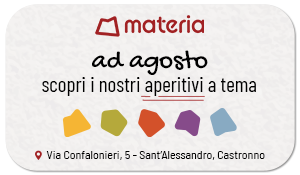Radio Materia - When art also touches Grana Padano. The fourth episode of "The Library of Materia" is now available as a podcast - - Varese News

From Chiaravalle Abbey to Leonardo's Last Supper, from Guttuso to the works on the walls of Arcumeggia , not forgetting the treasure that is the Maga of Gallarate. In the fourth episode of The Library of Matter, our librarian Ferdinando Giaquinto takes us on a new literary journey through the open shelves in the agora of the free space at Varesenews.
The new episodesThe fifth episode will be broadcast on Tuesday, September 2nd at 6:30 pm on www.radiomateria.it , with repeats every day at 8 am, 6:30 pm, and 8:30 pm.
Chiaravalle Abbey and the invention of Grana Padano
The episode opens with a book on Chiaravalle Abbey, one of the jewels of Lombardy's heritage, located south of Milan. Founded in the 10th century and linked to the figure of Saint Bernard, who promoted its development starting in 1135, the abbey represents a rare example of Cistercian architecture. Beyond its artistic and religious value, it holds a historical curiosity: it was here that Grana Padano cheese was born. The reclamation of the marshy areas generated a surplus of milk, which the monks learned to preserve by turning it into cheese. Active from 1150 to 1798, the year of its suppression by Maria Theresa of Austria, the abbey returned to monastic life only in 1952.
Santa Maria delle Grazie and Leonardo's Last Supper
Remaining in Milan, attention shifts to the Basilica of Santa Maria delle Grazie, an emblem of the Lombard Renaissance. Commissioned by Ludovico il Moro as a family mausoleum, construction began in 1492 and became world-famous for housing Leonardo da Vinci's Last Supper. The episode recalls the 1943 episode when World War II bombings destroyed part of the convent, but "almost miraculously" spared Leonardo's masterpiece. The basilica also played a significant historical role: between 1558 and 1779, it housed the Milanese Inquisition, established by the Dominicans and later suppressed by Maria Theresa of Austria. The book presented here is intended as a valuable guide to discovering the artistic treasures preserved here.
Renato Guttuso and his ties with Varese
The episode continues with a change of scenery and introduces Renato Guttuso, one of the most iconic painters of the twentieth century. His connection to Varese began in the 1950s, when his wife inherited a villa in Velate: the artist spent long periods working there until his death. In 1983, he donated to the city the fresco "Flight into Egypt on the Via delle Cappelle," located along the Sacro Monte route. The library dedicates seven titles to Guttuso, including "Il teatro di Guttuso," which explores his work as a set and costume designer, and "Guttuso a Varese," written by his adopted son Fabio Carapezza Guttuso, which provides an intimate and passionate portrait of the artist.
Arcumeggia, the open-air fresco gallery
From an artist to a town of art: Arcumeggia, in Valcuvia, is the protagonist of the next segment. This village, transformed in 1956 into an "open-air fresco gallery" to counteract depopulation, hosts murals by great artists such as Remo Brindisi, Aligi Sassu, Giuseppe Migneco, and Innocente Salvini. Among the most famous works is Salvini's "The Sharing of the Polenta." Although its activities have declined in recent decades, Arcumeggia remains a fascinating destination worth visiting, perhaps combining it with Villa della Porta Bozzolo, another architectural gem in Valcuvia.
MAGA of Gallarate, from its origins to its foundation
The narrative journey concludes at MAGA, the Museum of Modern and Contemporary Art in Gallarate. Founded in 1966 as the Civic Gallery of Modern Art by Silvio Zanella, it now houses over 5,000 works and serves as a leading cultural center for Lombardy. The episode features a book published in 1983, which documents the museum's early history, providing insight into the evolution of an institution that has always thrived and reinvented itself.
Varese News







